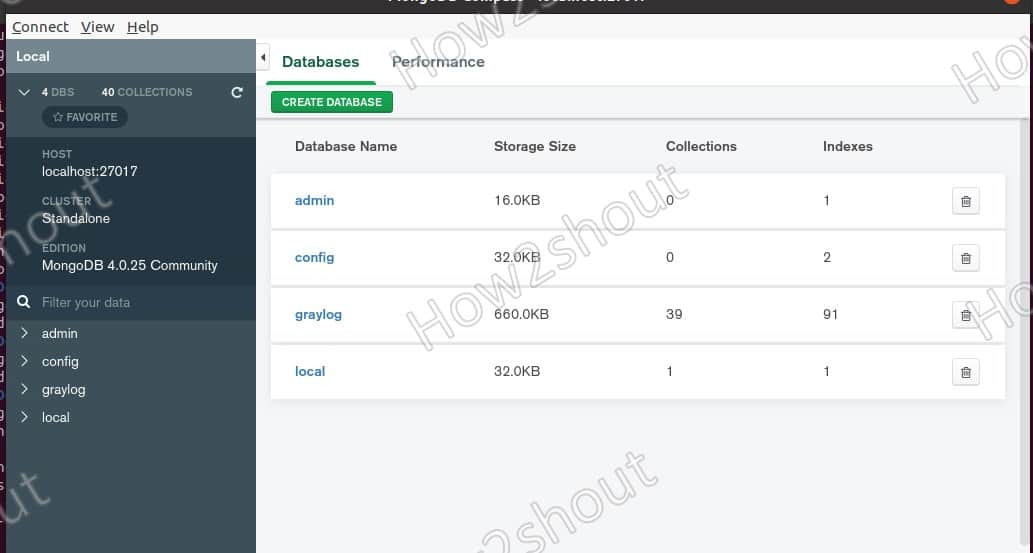

- #Mongodb compass install how to#
- #Mongodb compass install install#
- #Mongodb compass install android#
- #Mongodb compass install code#
- #Mongodb compass install password#
This means that if for some reason cURL isn’t able to contact the GPG server or the GPG server is down, it won’t accidentally add the resulting error code to your list of trusted keys.

In the following example, cURL prints the content of the GPG key file and then pipes it into the following sudo apt-key add - command, thereby adding the GPG key to your list of trusted keys.Īlso, note that this curl command uses the options -fsSL which, together, essentially tell cURL to fail silently. It reads whatever data is stored at the URL passed to it and prints the content to the system’s output. If you intend to use a version of MongoDB other than 4.4, be sure to change 4.4 in the URL portion of this command to align with the version you want to install:ĬURL is a command line tool available on many operating systems used to transfer data. To start, import the public GPG key for the latest stable version of MongoDB by running the following command.
#Mongodb compass install install#
Then, you’ll be able to install mongodb-org, a meta-package that always points to the latest version of MongoDB. To obtain the most recent version of this software, you must include MongoDB’s dedicated package repository to your APT sources. However, as of this writing, the version of MongoDB available from the default Ubuntu repositories is 3.6, while the latest stable release is 4.4. Ubuntu’s official package repositories include a stable version of MongoDB. Set this up by following our initial server setup guide for Ubuntu 20.04. This server should have a non-root administrative user and a firewall configured with UFW.
#Mongodb compass install how to#
In this tutorial you’ll install MongoDB on an Ubuntu 20.04 server, test it, and learn how to manage it as a systemd service. You can alter the schema at any time and as often as is necessary without having to set up a new database with an updated schema. Instead, it uses JSON-like documents with dynamic schemas, meaning that, unlike relational databases, MongoDB does not require a predefined schema before you add data to a database. It is classified as a NoSQL database because it does not rely on a traditional table-based relational database structure. MongoDB is a document database used in many modern web applications. Step 11: We have successfully installed MongoDB on our EC2 instance, to check if MongoDB is installed or not, verify using the following command.An earlier version of this tutorial was written by Melissa Anderson. Step 9: Now install the MongoDB packages using the command. Step 8: Reload the local package database using the following command. echo "deb bionic/mongodb-org/4.2 multiverse" | sudo tee /etc/apt//mongodb-org-4.2.list Step 6: If MongoDB is not installed on your virtual machine then at first Install the public key using the following command. Step 5: At first check, if MongoDB is already installed or not. Step 4: A prompt will pop up after connecting. Step 3: Connect to your EC2 Instance by clicking on Connect Button. Step 2: Start the EC2 instance that you have created in Step 1. Step 1: Create an AWS Elastic Cloud Compute Instance.
#Mongodb compass install password#
#Mongodb compass install android#


 0 kommentar(er)
0 kommentar(er)
